Insect egg identification is crucial for understanding life cycles and managing pests. Eggs vary in shape, size, and color, often requiring expert knowledge to distinguish species. This guide helps recognize common UK insect eggs, aiding in gardening, conservation, and pest control efforts effectively.
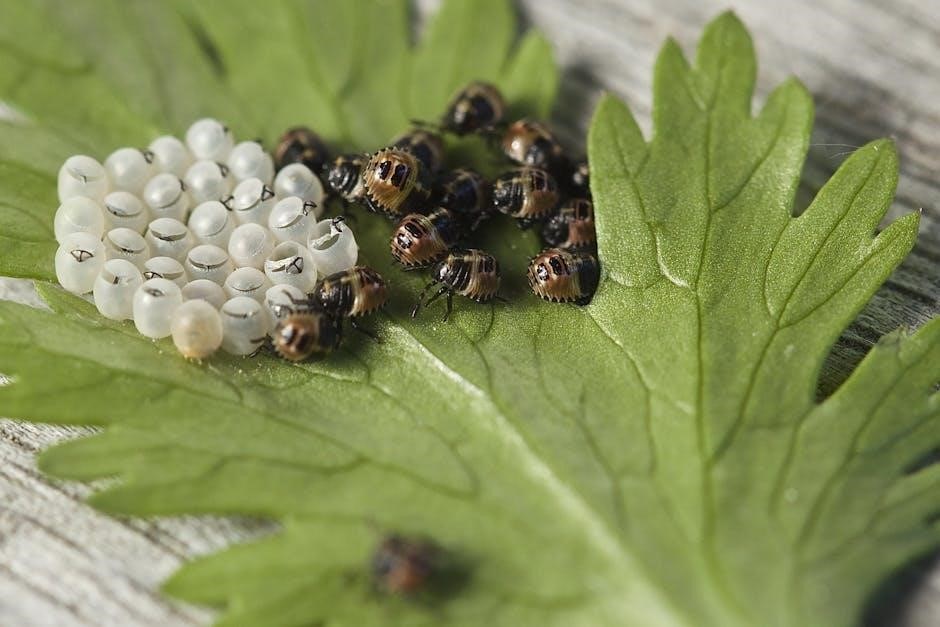
Why Insect Egg Identification Matters
Insect egg identification is vital for effective pest control, gardening, and conservation efforts. Recognizing eggs helps determine whether they are harmful or beneficial, guiding actions to prevent infestations or protect valuable species. Early detection of pest eggs, such as those of bed bugs or garden pests, enables timely interventions, reducing damage to crops and homes. Additionally, identifying eggs supports ecological studies by aiding in the understanding of insect life cycles and population dynamics. This knowledge is crucial for maintaining biodiversity and ensuring balanced ecosystems. By identifying eggs, individuals can make informed decisions that protect both the environment and human well-being, emphasizing the importance of this skill in various contexts.
Overview of Common Insect Eggs in the UK
In the UK, insect eggs exhibit remarkable diversity in shape, size, and color, reflecting the wide range of species present. Common types include butterfly and moth eggs, often tiny and spherical, while beetle eggs are typically oval and well-hidden. Fly eggs resemble small grains of rice and are usually found in clusters, whereas true bug eggs may feature distinctive patterns or protective casings. Bed bug eggs are small, white, and ridged, often laid in secluded spots. Cockroach eggs are enclosed in dark, leathery cases called oothecae. Shield bug eggs are vibrant and patterned, while certain moth species lay eggs in protective silk cases. These eggs can be found in gardens, homes, or natural habitats, playing crucial roles in ecosystems and pest dynamics.
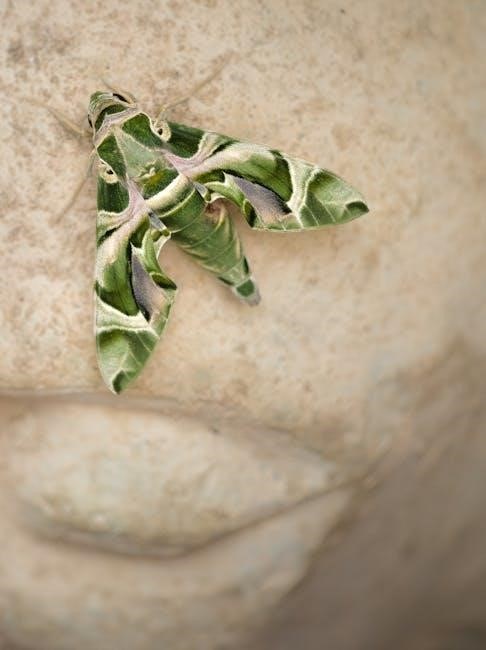
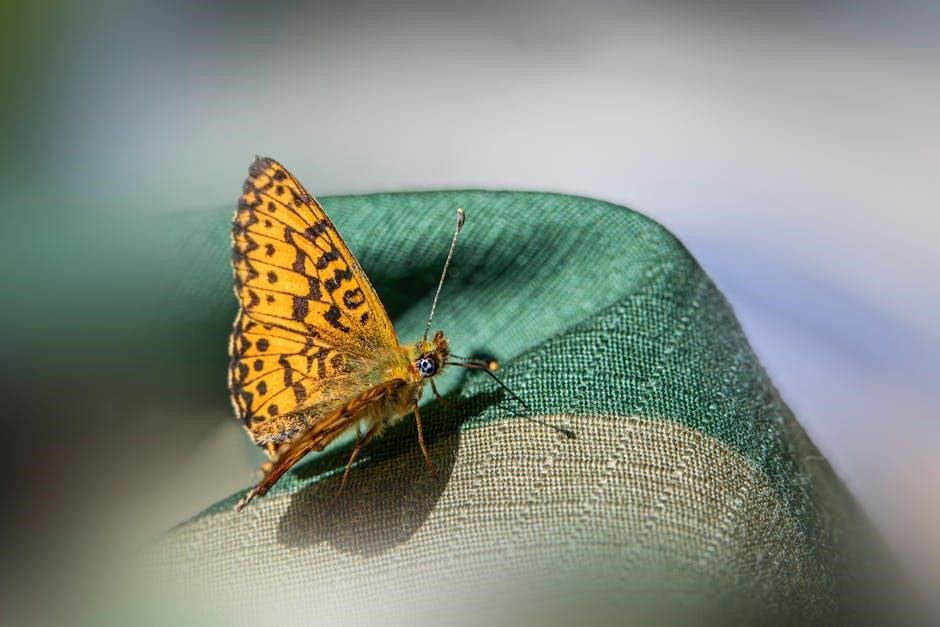
Characteristics of Insect Eggs
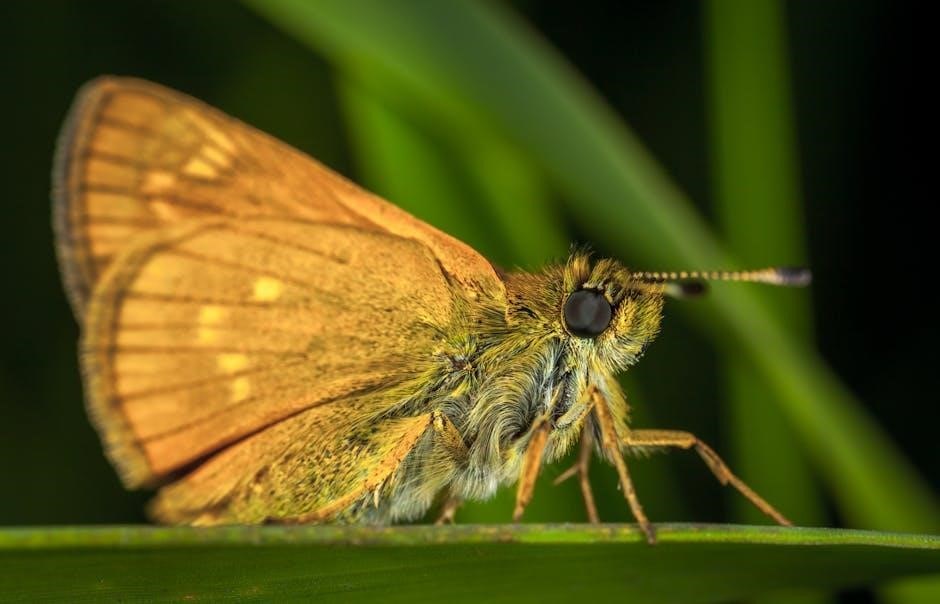
Insect eggs vary widely, with distinct shapes, sizes, colors, and textures. They often feature protective adaptations like hard shells or patterns, aiding survival and camouflage.
Shapes and Sizes of Insect Eggs
Insect eggs exhibit remarkable diversity in shape and size, which are key identifiers. Butterfly eggs are often round or oval, while beetle eggs can be elongated or cylindrical. Moth eggs tend to be spherical or flattened, varying in size depending on the species. Fly eggs are typically tiny, almost microscopic, and laid in clusters. Some insects, like true bugs (Hemiptera), lay eggs with distinctive ridges or patterns. The shape and size of eggs are adapted to their environment, providing protection and ensuring survival. These physical traits are essential for identification, helping distinguish between beneficial and harmful species, and aiding in pest control and conservation efforts.
Colors and Patterns of Insect Eggs
Insect eggs display a wide range of colors and patterns, which are vital for identification. Many eggs are white or pale yellow, blending into their surroundings for camouflage. Others, like those of certain moths, may have intricate patterns or markings that distinguish them from other species. For example, butterfly eggs often feature ridges or a pointed tip, while beetle eggs can appear shiny or matte. Some eggs, such as those of true bugs (Hemiptera), may have distinctive shapes or coloration that reflect their evolutionary adaptations. These visual traits not only aid in identification but also reveal the unique strategies insects use to protect their eggs from predators and environmental challenges.
textures and Protective Features of Insect Eggs
Textures and Protective Features of Insect Eggs
Insect eggs exhibit a variety of textures and protective features that enhance their survival. Some eggs are smooth and shiny, while others have ridged or sculptured surfaces, such as moth eggs, which often feature ribbed or reticulated patterns. Beetle eggs may have a hard, calcified shell that protects them from environmental stress. Certain species, like cockroaches, lay egg cases (oothecae) that encase multiple eggs, providing additional defense. True bug eggs often have a leathery texture and may be covered in protective secretions. These adaptations not only safeguard the eggs but also aid in identification, as their unique textures and features can distinguish one species from another in the UK insect fauna.
Common Types of Insect Eggs in the UK
The UK hosts diverse insect eggs, including butterfly, moth, beetle, fly, true bug, bed bug, and cockroach eggs, each with unique characteristics and ecological roles.
Butterfly Eggs
Butterfly eggs are typically small, round, and laid on the underside of leaves, often on host plants specific to the species. They vary in color from white to yellow or blue, sometimes with intricate patterns. Female butterflies carefully choose locations to ensure offspring survival. Common UK species, like the Orange-tip and Speckled Wood, lay eggs on plants such as garlic mustard and grasses. These eggs hatch into caterpillars, which are essential for the butterfly life cycle. Identifying butterfly eggs can be challenging due to their small size and camouflage, but understanding their host plants is key to locating them.
Moth Eggs
Moth eggs are often similar to butterfly eggs in shape and size but can vary widely among species. They are typically white, yellowish, or translucent, sometimes with patterns. Many moths lay their eggs on leaves, while others prefer tree bark or soil. Common UK species, such as the Poplar Hawk-moth, lay eggs on specific host plants. Moth eggs can be protected by textured coatings or chemicals to deter predators. Identifying moth eggs requires knowledge of their habitats and host plants, as well as their unique characteristics. Conservation efforts often focus on protecting these eggs to maintain moth populations and biodiversity in the UK. Their diversity makes them fascinating for study and identification.
Beetle Eggs
Beetle eggs are typically small, oval-shaped, and white or yellowish in color. They are often laid in protected locations such as soil, under tree bark, or within plant tissues. Some species, like the Viburnum Leaf Beetle, lay eggs in clusters, while others may scatter them individually. Beetle eggs can be difficult to identify due to their similarity across species. However, their placement and surrounding environment often provide clues. For example, eggs near decaying wood may belong to wood-boring beetles. Understanding beetle egg characteristics is essential for managing pests and conserving beneficial species in the UK. Their diversity in size, shape, and habitat makes them a fascinating subject for insect enthusiasts and researchers alike.
Fly Eggs
Fly eggs are typically tiny, white, and oval-shaped, resembling small grains of rice. They are often laid in large batches on surfaces such as decaying organic matter, manure, or rotting vegetation. House flies, for example, lay their eggs in moist environments, where they hatch quickly into larvae, or maggots, within 24 hours. These eggs are challenging to identify due to their small size and similarity across species. However, their location and the presence of maggots nearby can provide clues. Identifying fly eggs is important for pest control, as they can indicate potential infestations in households or gardens. Regular monitoring of organic waste areas can help detect fly eggs early, preventing nuisance or health risks. Understanding their life cycle is key to effective management strategies.
True Bug (Hemiptera) Eggs
True bug eggs, from the Hemiptera family, are often laid in protected locations such as plant stems, leaves, or soil. They are typically white or pale-colored, sometimes with distinctive patterns, and are usually around 1mm in size. These eggs have a hard outer shell and may be covered with a protective casing or arranged in clusters. Some species, like aphids, lay eggs that resemble tiny pearls, while others, such as shield bugs, may place their eggs in rows. Identifying Hemiptera eggs can be challenging due to their small size and similarity across species. However, their specific habitats and the presence of adult bugs nearby can provide clues. Recognizing these eggs is essential for managing pests and understanding their life cycles in gardens and homes. Early detection helps in controlling infestations effectively, especially for common pests like aphids and shield bugs. Knowing their characteristics aids in distinguishing them from other insect eggs, making it easier to implement targeted pest management strategies. This knowledge is particularly valuable for gardeners and homeowners aiming to protect plants and maintain a balanced ecosystem. By understanding the unique traits of Hemiptera eggs, one can better navigate their role in the environment and take appropriate actions to manage their presence.
Bed Bug Eggs
Bed bug eggs are small, white, and approximately 1mm in length, often laid in cracks and crevices near sleeping areas. They are difficult to spot due to their size and color, which blends with light surfaces. Female bed bugs typically lay eggs in batches, cementing them in place with a sticky substance. The eggs hatch within 6-10 days, and the tiny nymphs emerge, starting their life cycle. Identifying bed bug eggs requires a keen eye and knowledge of their preferred habitats, such as mattress seams and behind wallpaper. Regular inspections are crucial for early detection and effective pest control. Understanding their characteristics helps homeowners and pest professionals target infestations promptly, preventing widespread issues. Accurate identification of bed bug eggs is vital for implementing successful eradication strategies and ensuring a pest-free environment. Early detection can save time and resources in managing these persistent pests. By recognizing the signs of bed bug eggs, individuals can take proactive measures to protect their homes and health. This knowledge is essential for anyone dealing with bed bug infestations in the UK. Regular monitoring and awareness of their egg characteristics are key to maintaining a bed bug-free home. Knowing where to look and what to look for empowers individuals to address the problem before it escalates. This guide provides valuable insights into identifying bed bug eggs, helping to combat infestations effectively. By understanding their habits and habitats, one can better navigate the challenges of bed bug control. This information is particularly useful for homeowners, travelers, and pest control professionals seeking to manage bed bug populations. With the right knowledge, bed bug eggs can be identified and treated efficiently, reducing the risk of infestations and their associated discomfort. Early intervention is essential for preventing bed bugs from establishing a stronghold in any environment. By staying informed and vigilant, individuals can protect their living spaces from these unwanted pests. This guide serves as a comprehensive resource for recognizing bed bug eggs, enabling effective control measures and promoting a pest-free lifestyle. The ability to identify bed bug eggs accurately is a critical skill in the ongoing battle against these invasive insects. With this knowledge, anyone can take the first step toward eliminating bed bugs and restoring peace of mind. Bed bug eggs may be small, but their impact can be significant, making identification and prompt action essential for maintaining a comfortable and hygienic living environment. By understanding the characteristics of bed bug eggs, individuals can take proactive steps to prevent infestations and safeguard their homes. This guide offers detailed insights to aid in the identification process, ensuring that bed bug eggs are detected early and managed effectively. The fight against bed bugs begins with knowledge, and this section provides the necessary tools to identify their eggs accurately. With this information, homeowners and professionals alike can combat bed bug infestations with confidence and precision. Identifying bed bug eggs is the first step toward controlling their populations and preventing future outbreaks. By familiarizing oneself with their appearance and habits, individuals can take decisive actions to eliminate bed bugs from their environment. This guide is an invaluable resource for anyone seeking to understand and address bed bug infestations in the UK. Through accurate identification of bed bug eggs, effective pest control measures can be implemented, ensuring a safer and healthier living space. The information provided here empowers individuals to take charge of their pest control needs, offering a clear path to identifying and managing bed bug eggs. By leveraging this knowledge, the challenges posed by bed bugs can be overcome, restoring comfort and security to homes across the UK. Identifying bed bug eggs is a crucial step in the broader strategy to control and eliminate these pests. With the insights provided in this guide, individuals can enhance their ability to detect and respond to bed bug infestations promptly and effectively. This knowledge is instrumental in maintaining a pest-free environment and protecting against the nuisance and health risks associated with bed bugs. By understanding the specific characteristics of bed bug eggs, individuals can better navigate the complexities of pest control and ensure a safer, more comfortable living space. This guide serves as a vital tool in the ongoing efforts to manage bed bug populations, offering detailed information that aids in the accurate identification of their eggs. With this understanding, targeted and effective strategies can be employed to prevent and eliminate bed bug infestations. The ability to identify bed bug eggs accurately is a cornerstone of successful pest management, enabling individuals to address the root of the problem before it worsens. By staying informed and proactive, homeowners and professionals can combat bed bugs with confidence, ensuring their environments remain free from these unwanted pests. This guide provides the essential knowledge needed to identify bed bug eggs, serving as a foundational step in effective pest control and management. Through careful observation and awareness of their characteristics, individuals can detect bed bug eggs early, preventing the onset of a full-scale infestation. This information is vital for anyone seeking to protect their home and health from the challenges posed by bed bugs. By leveraging the insights provided here, the identification and management of bed bug eggs become more accessible and effective, empowering individuals to take control of their pest control needs. The accurate identification of bed bug eggs is a critical component in the fight against these persistent pests. With the detailed information provided in this guide, individuals can enhance their ability to detect and respond to bed bug infestations, ensuring a safer and more comfortable living environment. By understanding the specific traits of bed bug eggs, one can better equip themselves to manage and eliminate these pests, protecting their home and health from the associated risks. This guide offers a comprehensive understanding of bed bug eggs, enabling individuals to take informed and effective action against infestations. Through knowledge and vigilance, the challenges posed by bed bugs can be overcome, restoring peace of mind and a pest-free home. The ability to identify bed bug eggs accurately is a powerful tool in pest control, allowing for early intervention and effective management of infestations. By familiarizing oneself with their characteristics and habits, individuals can take proactive steps to prevent bed bugs from establishing a presence in their homes. This guide serves as an essential resource for anyone seeking to understand and address bed bug infestations, providing the necessary information to identify and manage their eggs successfully. With this knowledge, the fight against bed bugs becomes more manageable, ensuring a healthier and more comfortable living space for all. Identifying bed bug eggs is the first and most crucial step in controlling their populations and preventing future outbreaks. By understanding their appearance and habits, individuals can implement targeted strategies to eliminate bed bugs from their environment. This guide offers detailed insights to aid in the identification process, ensuring that bed bug eggs are detected early and managed effectively. The information provided here equips homeowners and professionals with the necessary tools to combat bed bug infestations with confidence and precision. By utilizing this knowledge, individuals can restore their homes to a pest-free state, enjoying a safer and more hygienic living environment. The ability to identify bed bug eggs accurately is instrumental in the broader strategy to control and eliminate these pests. With the insights provided in this guide, individuals can enhance their ability to detect and respond to bed bug infestations promptly and effectively. This knowledge is essential for maintaining a pest-free environment and protecting against the nuisance and health risks associated with bed bugs. By understanding the specific characteristics of bed bug eggs, individuals can better navigate the complexities of pest control and ensure a safer, more comfortable living space. This guide serves as a vital tool in the ongoing efforts to manage bed bug populations, offering detailed information that aids in the accurate identification of their eggs. With this understanding, targeted and effective strategies can be employed to prevent and eliminate bed bug infestations. The ability to identify bed bug eggs accurately is a cornerstone of successful pest management, enabling individuals to address the root of the problem before it worsens. By staying informed and proactive, homeowners and professionals can combat bed bugs with confidence, ensuring their environments remain free from these unwanted pests. This guide provides the essential knowledge needed to identify bed bug eggs, serving as a foundational step in effective pest control and management. Through careful observation and awareness of their characteristics, individuals can detect bed bug eggs early, preventing the onset of a full-scale infestation. This information is vital for anyone seeking to protect their home and health from the challenges posed by bed bugs. By leveraging the insights provided here, the identification and management of bed bug eggs become more accessible and effective, empowering individuals to take control of their pest control needs. The accurate identification of bed bug eggs is a critical component in the fight against these persistent pests. With the detailed information provided in this guide, individuals can enhance their ability to detect and respond to bed bug infestations, ensuring a safer and more comfortable living environment. By understanding the specific traits of bed bug eggs, one can better equip themselves to manage and eliminate these pests, protecting their home and health from the associated risks. This guide offers a comprehensive understanding of bed bug eggs, enabling individuals to take informed and effective action against infestations. Through knowledge and vigilance, the challenges posed by bed bugs can be overcome, restoring peace of mind and a pest-free home.
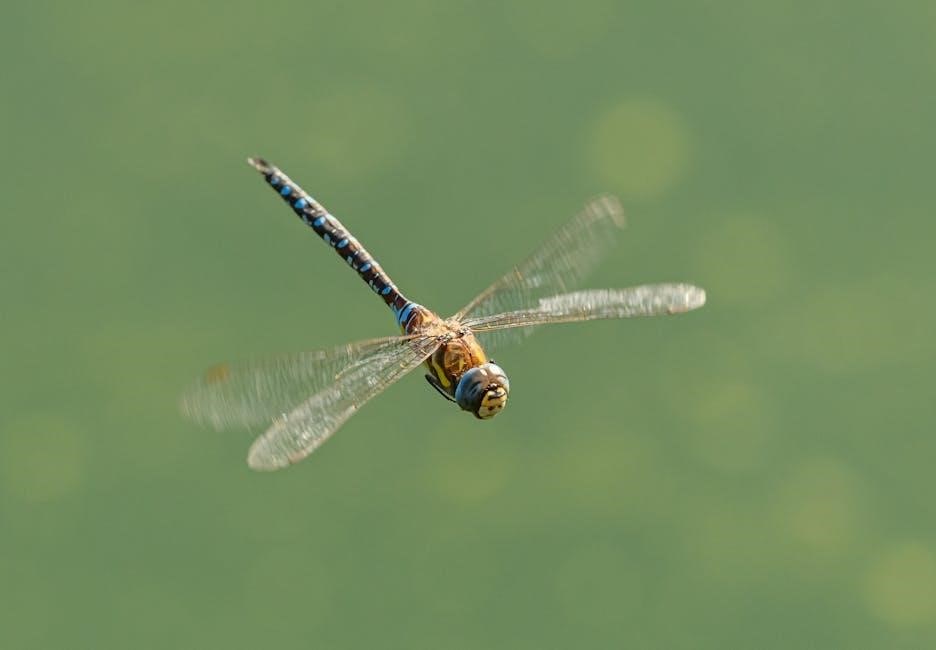
Cockroach Eggs
Cockroach eggs are typically brown, oval-shaped capsules, about 5mm long, containing multiple eggs. They are often found in dark, damp areas like kitchens, bathrooms, or behind appliances. Female cockroaches either carry the egg case until hatching or deposit it in a protected spot. The eggs hatch within 1-3 weeks, depending on the species. Early detection of cockroach eggs is crucial for pest control, as they can lead to infestations if left unchecked. Identifying cockroach eggs involves looking for these small, brown, leathery cases in hidden locations. Regular inspections of potential breeding sites can help prevent infestations. Understanding cockroach egg characteristics is essential for effective pest management and maintaining a clean, hygienic environment. Early detection and removal are key to controlling cockroach populations. By recognizing their eggs, homeowners can take proactive steps to prevent infestations and reduce health risks associated with these pests. Accurate identification of cockroach eggs is vital for implementing targeted control measures and ensuring a pest-free home. Regular monitoring and awareness of their egg characteristics are crucial for managing cockroach infestations effectively. This guide provides essential information for identifying cockroach eggs, helping to combat infestations and protect homes from these unwanted pests. By staying informed and vigilant, individuals can address cockroach egg sightings promptly, preventing further issues. The ability to identify cockroach eggs accurately is a critical skill in maintaining a clean and safe living environment. With this knowledge, homeowners can take decisive actions to eliminate cockroaches and their eggs, ensuring a healthier home for everyone. Cockroach eggs may be small, but their impact can be significant, making identification and prompt action essential for preventing infestations. By understanding their characteristics, individuals can better equip themselves to manage and eliminate these pests, safeguarding their homes from potential health risks. This guide offers valuable insights into identifying cockroach eggs, enabling effective control measures and promoting a pest-free lifestyle. Early intervention is key to preventing cockroach infestations, and accurate egg identification plays a central role in this process. By familiarizing oneself with their appearance and habits, individuals can take proactive steps to protect their homes from these pests; This guide serves as a reliable resource for recognizing cockroach eggs, ensuring that infestations are addressed before they escalate. With this information, homeowners can maintain a cleaner, safer environment, free from the challenges posed by cockroaches. Identifying cockroach eggs is the first step toward controlling their populations and preventing future outbreaks. By understanding their traits and habits, individuals can implement targeted strategies to eliminate cockroaches from their homes. This guide provides the necessary knowledge to identify cockroach eggs accurately, enabling effective pest management and a healthier living space. By leveraging this information, the fight against cockroaches becomes more manageable, ensuring a comfortable and hygienic home environment. The ability to identify cockroach eggs accurately is instrumental in the broader strategy to control and eliminate these pests. With the insights provided here, individuals can enhance their ability to detect and respond to cockroach infestations promptly and effectively. This knowledge is essential for maintaining a pest-free environment and protecting against the health risks associated with cockroaches. By understanding their specific characteristics, individuals can better navigate the complexities of pest control and ensure a safer, more comfortable living space. This guide serves as a vital tool in the ongoing efforts to manage cockroach populations, offering detailed information that aids in the accurate identification of their eggs. With this understanding, targeted and effective strategies can be employed to prevent and eliminate cockroach infestations. The ability to identify cockroach eggs accurately is a cornerstone of successful pest management, enabling individuals to address the root of the problem before it worsens. By staying informed and proactive, homeowners can combat cockroaches with confidence, ensuring their environments remain free from these unwanted pests. This guide provides the essential knowledge needed to identify cockroach eggs, serving as a foundational step in effective pest control and management. Through careful observation and awareness of their characteristics, individuals can detect cockroach eggs early, preventing the onset of a full-scale infestation. This information is vital for anyone seeking to protect their home and health from the challenges posed by cockroaches. By leveraging the insights provided here, the identification and management of cockroach eggs become more accessible and effective, empowering individuals to take control of their pest control needs. The accurate identification of cockroach eggs is a critical component in the fight against these persistent pests. With the detailed information provided in this guide, individuals can enhance their ability to detect and respond to cockroach infestations, ensuring a safer and more comfortable living environment. By understanding the specific traits of cockroach eggs, one can better equip themselves to manage and eliminate these pests, protecting their home and health from the associated risks. This guide offers a comprehensive understanding of cockroach eggs, enabling individuals to take informed and effective action against infestations. Through knowledge and vigilance, the challenges posed by cockroaches can be overcome, restoring peace of mind and a pest-free home. The ability to identify cockroach eggs accurately is a powerful tool in pest control, allowing for early intervention and effective management of infestations. By familiarizing oneself with their characteristics and habits, individuals can take proactive steps to prevent cockroaches from establishing a presence in their homes. This guide serves as an essential resource for anyone seeking to understand and address cockroach infestations, providing the necessary information to identify and manage their eggs successfully. With this knowledge, the fight against cockroaches becomes more manageable, ensuring a healthier and more comfortable living space for all. Identifying cockroach eggs is the first step toward controlling their populations and preventing future outbreaks. By understanding their appearance and habits, individuals can implement targeted strategies to eliminate cockroaches from their environment. This guide offers detailed insights to aid in the identification process, ensuring that cockroach eggs are detected early and managed effectively. The information provided here equips homeowners and professionals with the necessary tools to combat cockroach infestations with confidence and precision. By utilizing this knowledge, individuals can restore their homes to a pest-free state, enjoying a safer and more hygienic living environment. The ability to identify cockroach eggs accurately is instrumental in the broader strategy to control and eliminate these pests. With the insights provided in this guide, individuals can enhance their ability to detect and respond to cockroach infestations promptly and effectively. This knowledge is essential for maintaining a pest-free environment and protecting against the nuisance and health risks associated with cockroaches. By understanding the specific characteristics of cockroach eggs, individuals can better navigate the complexities of pest control and ensure a safer, more comfortable living space. This guide serves as a vital tool in the ongoing efforts to manage cockroach populations, offering detailed information that aids in the accurate identification of their eggs. With this understanding, targeted and effective strategies can be employed to prevent and eliminate cockroach infestations. The ability to identify cockroach eggs accurately is a cornerstone of successful pest management, enabling individuals to address the root of the problem before it worsens. By staying informed and proactive, homeowners and professionals can combat cockroaches with confidence, ensuring their environments remain free from these unwanted pests. This guide provides the essential knowledge needed to identify cockroach eggs, serving as a foundational step in effective pest control and management. Through careful observation and awareness of their characteristics, individuals can detect cockroach eggs early, preventing the onset of a full-scale infestation. This information is vital for anyone seeking to protect their home and health from the challenges posed by cockroaches. By leveraging the insights provided here, the identification and management of cockroach eggs become more accessible and effective, empowering individuals to take control of their pest control needs. The accurate identification of cockroach eggs is a critical component in the fight against these persistent pests. With the detailed information provided in this guide, individuals can enhance their ability to detect and respond to cockroach infestations, ensuring a safer and more comfortable living environment. By understanding the specific traits of cockroach eggs, one can better equip themselves to manage and eliminate these pests, protecting their home and health from the associated risks. This guide offers a comprehensive understanding of cockroach eggs, enabling individuals to take informed and effective action against infestations. Through knowledge and vigilance, the challenges posed by cockroaches can be overcome, restoring peace of
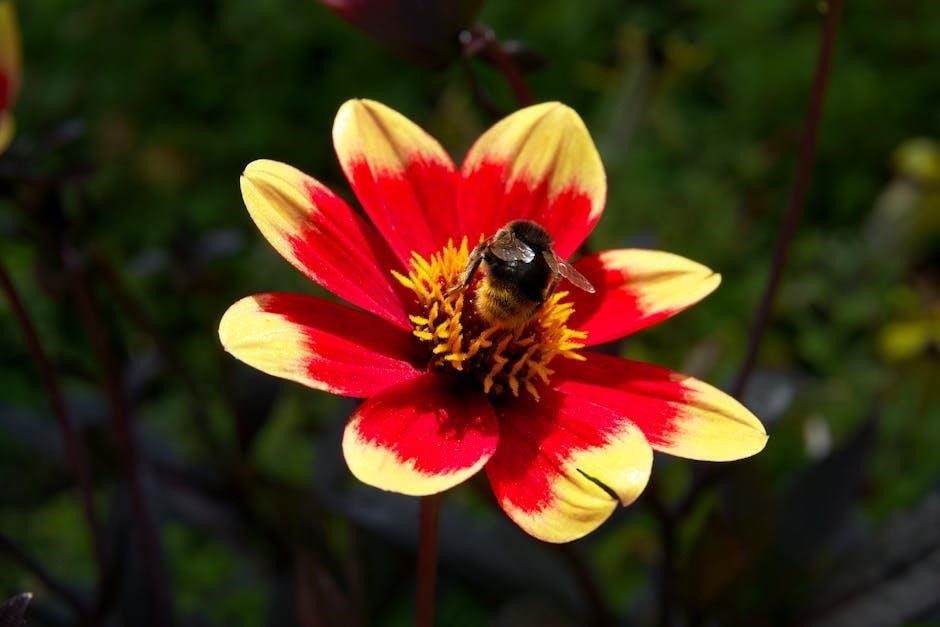
The Importance of Identifying Insect Eggs
Identifying insect eggs is vital for pest control, gardening, and conservation. It helps manage harmful species and protect beneficial ones, ensuring balanced ecosystems and preventing infestations early. Accurate identification enables informed decisions, safeguarding homes, crops, and natural habitats from potential threats, while supporting biodiversity and sustainable practices effectively.
What to Do Next
Pest Control and Management
Identifying insect eggs is a critical step in effective pest control and management. Early detection of eggs allows for targeted interventions, preventing infestations before they escalate. For instance, recognizing bed bug or cockroach eggs in homes can lead to timely treatments, reducing the need for widespread pesticides. In gardens, identifying harmful species like aphid or caterpillar eggs can prevent damage to plants, while conserving beneficial insects. Accurate identification enables the use of specific, eco-friendly strategies, such as biological controls or pesticides, minimizing environmental impact. Regular monitoring of egg populations helps track pest activity, ensuring proactive measures to protect both domestic and agricultural environments. This approach supports sustainable pest management, reducing risks to health, crops, and biodiversity.
